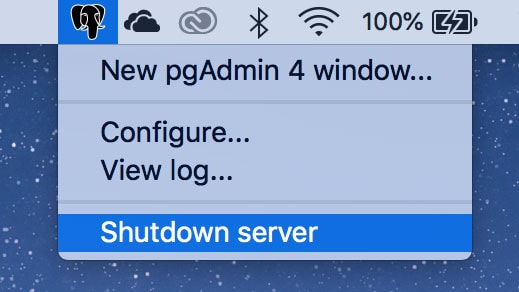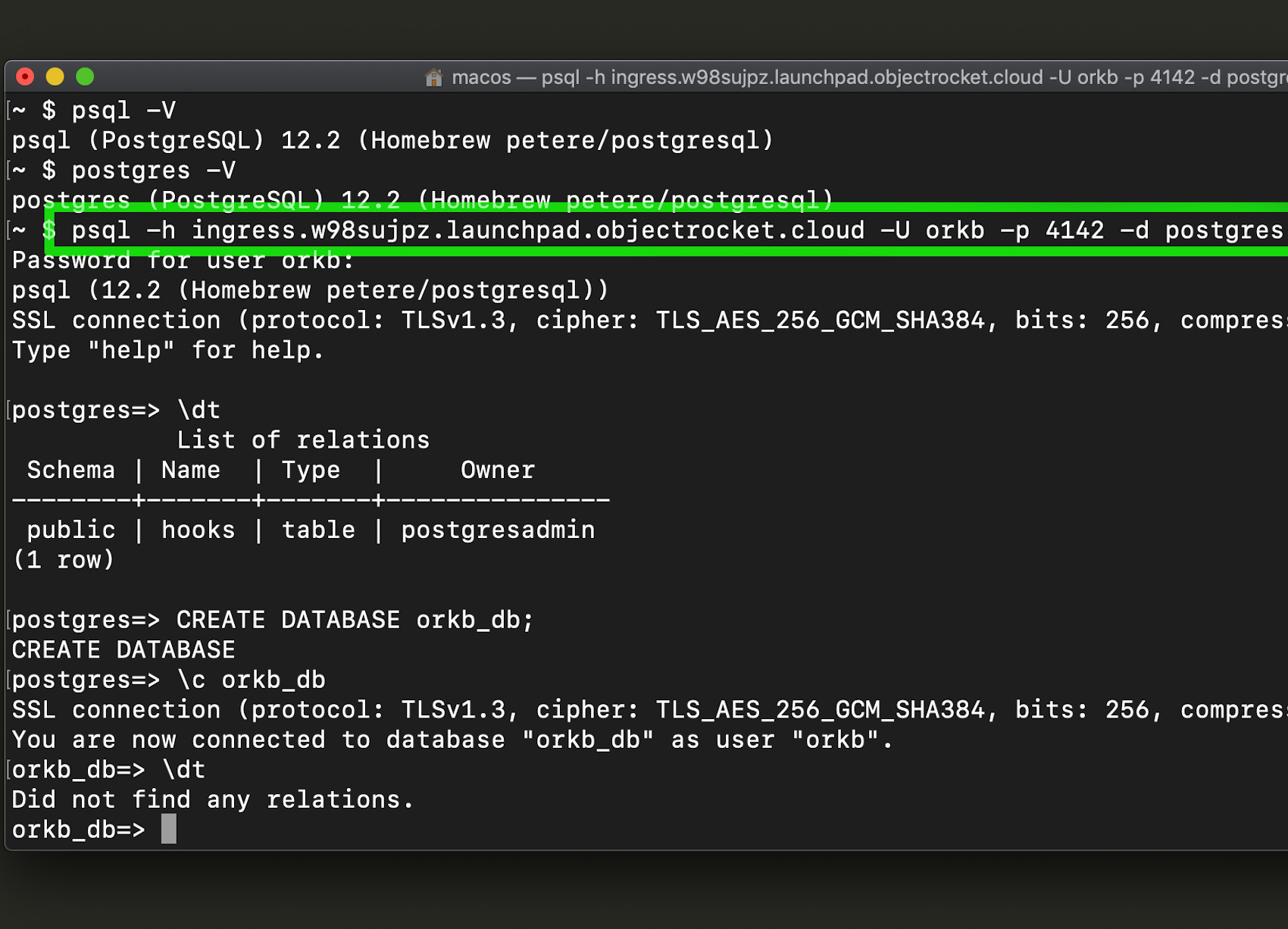

- Postgres app createdb command install#
- Postgres app createdb command update#
- Postgres app createdb command password#
Add a Domain Class with Spring Data and JPAĪ domain or model is the programmatic representation of the data you will be storing. There are no domain models, resource repositories, or controller classes. 09:27:50.308 INFO 31888 - c.o.s.SpringBootJpaApplication : Started SpringBootJpaApplication in 21.361 seconds (JVM running for 21.848 ) 09:27:50.233 INFO 31888 - o.s.j.e.a.AnnotationMBeanExporter : Located MBean 'dataSource': registering with JMX server as MBean

This happens because Hibernate cannot autodetect the database platform, so complains about that before complaining about there not actually being a running server. However, without this property, if you run the app without having started your Postgres server, what you’ll get is a rather unhelpful error about not having added this config property instead of being told to start your server. Spring Data/Hibernate can autodetect the platform. Each time the program is run, a new database is created, starting with fresh tables and data.ĭatabase-platform is actually unnecessary. create-drop: like create, but also drops the schema when the session closes (useful for testing).create: creates the schema, destroying any previous data.validate: validates the schema but makes no changes.The ddl-auto property specifies hibernate’s behavior upon loading.
Postgres app createdb command password#
Spring : jpa : hibernate : ddl-auto : create database-platform : datasource : url : " jdbc:postgresql://localhost:5432/springbootjpa" username : jpatutorial password : You should be able to run the following command: psql -V and get a response like: For this, you can use the Postgres CLI, psql. The next thing you’ll need to do is create a Postgres user and database for the project.
Postgres app createdb command install#
If you don’t already have it installed, go to their downloads page and install it. You’ll need to have PostgreSQL installed for this tutorial. For example, in this tutorial, you’ll be using Postgres, but later if you decided you’d rather use MySQL, all you’d have to do is change out some dependencies. No need to actually write persistence or retrieval methods! Another great benefit is that you can change the underlying database implementation transparently without having to change any code. As you’ll see, it makes persisting your Java classes as simple as adding some annotations and creating a simple repository interface. Spring Data JPA is a wrapper around JPA providers such as Hibernate. It describes an abstraction layer between Java classes and a relational database. JPA is the Java Persistence API, a specification for managing relational databases using Java. If this sounds complicated - don’t worry! It’s not.īefore we dig in, let’s cover some background:Ī resource server is a programmatic access point for your server’s functions and data (basically the same as an API server and/or possibly REST server). On top of that, you’re going to implement a group-based authentication and authorization layer using OAuth 2.0. In this post, you’re going to build a resource server using Spring Boot and Spring Data JPA.

When coupled with Okta, you get professionally maintained OAuth and JWT technologies easily integrated into Spring Boot using Spring Security. Within the Java ecosystem, Spring makes building secure resource servers for your data simple. Java is a great language with decades of history in professional, enterprise development, and is a great choice for any application’s server stack.
Postgres app createdb command update#
Every non-trivial application needs a way to save and update data: a resource server that is accessible via HTTP.


 0 kommentar(er)
0 kommentar(er)
